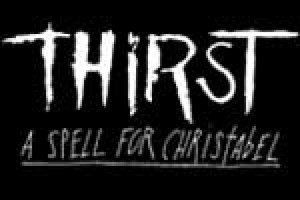
in Thirst: A Spell for Christabel
(© Stefan Radke)
Thirst: A Spell for Christabel, now at Here Arts Center, is a washout. Although Samuel Taylor Coleridge’s Gothic poem serves as its inspiration, Monika Bustamante’s dramatization lacks poetic expressiveness — and isn’t done any favors by Elena Araoz’s production.
The one-act play centers on a young woman named Christabel (Elizabeth Gross) who lives with her father (Matthew Cowles) in an abandoned forest during a drought. While out picking berries she encounters a strange, bewitching woman (Lori Funk) who promptly seduces and turns on her before setting her sights on the father. The primal familial conflict in the plot might have either been distilled into a fairy tale or heightened into grand drama, but the end result is blandly earnest and frustratingly one-dimensional. The biggest mystery is what attracted the playwright to mine Coleridge’s poem for pedestrian soap opera.
Moreover, the three performers in the cast each seem to be in different shows. Gross gives a sincere but unimaginative performance that would be most at home on a TV afterschool special. Funk hams it up so blatantly that her performance quickly veers into the camp territory reserved for B-monster movies; it wouldn’t have been a surprise if she had started hissing and posing her hands like cat claws. The two have no chemistry together, which makes the (tepid) scene of their lesbian tryst especially unconvincing and cold. Only Cowles — a noted stage and television veteran — gives a sufficiently heightened and suitably theatrical performance that mines some gravity from the material.
The production also fails to create a coherent world for the play, partly because of a production design that shows limited theatrical imagination. It may solve one problem to put visible drawers into set pieces of trees, as the play’s action alternates between forest and house, but such artless efficiency creates another.








